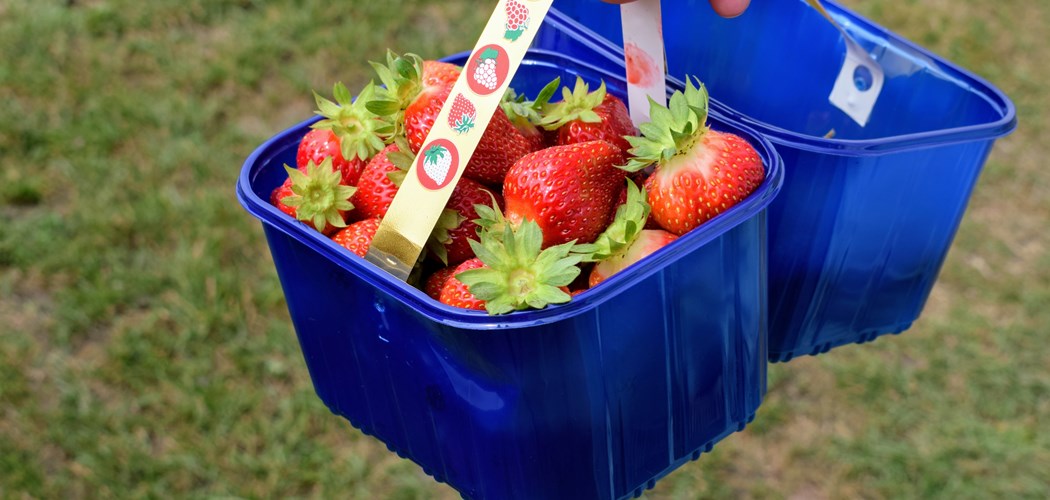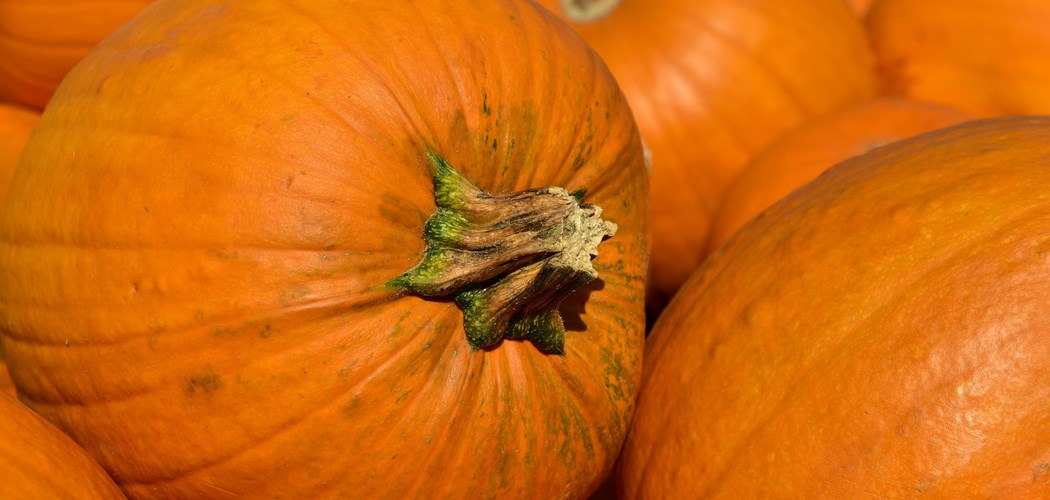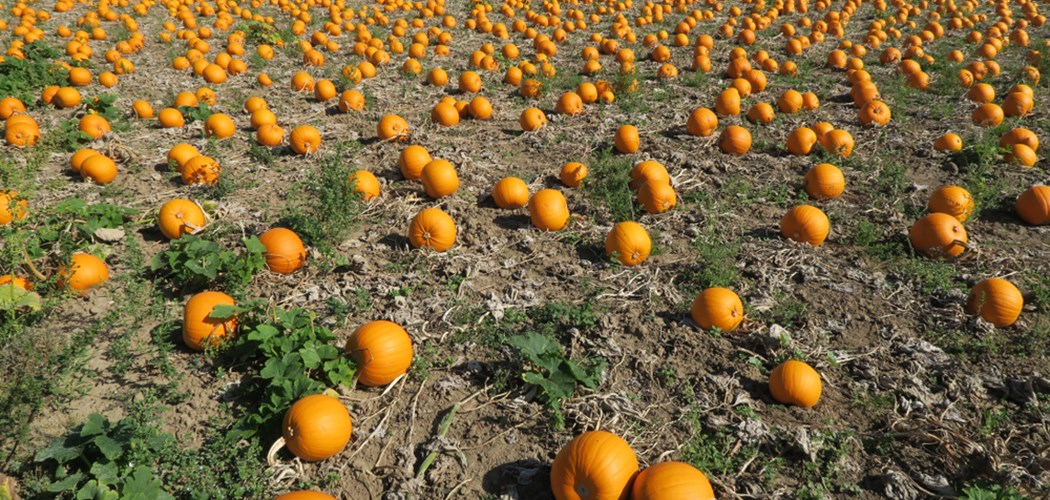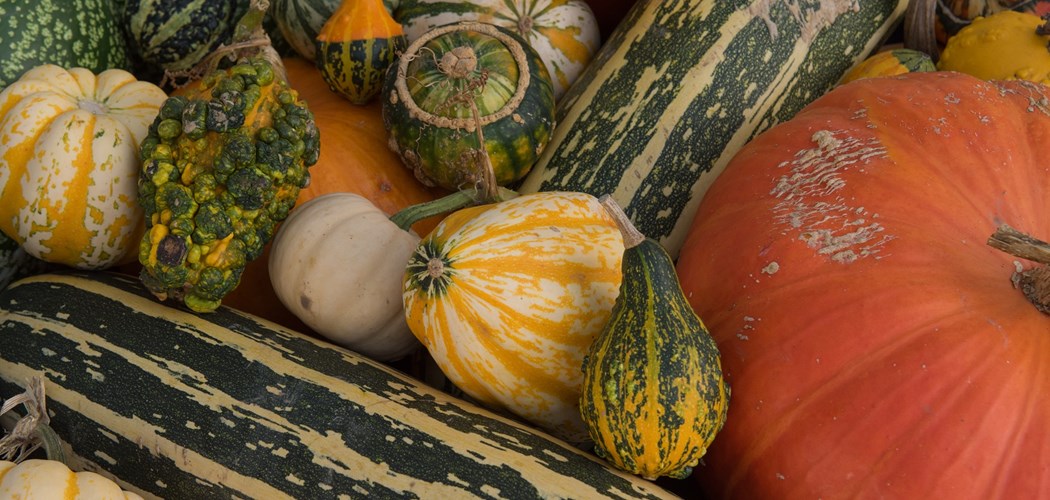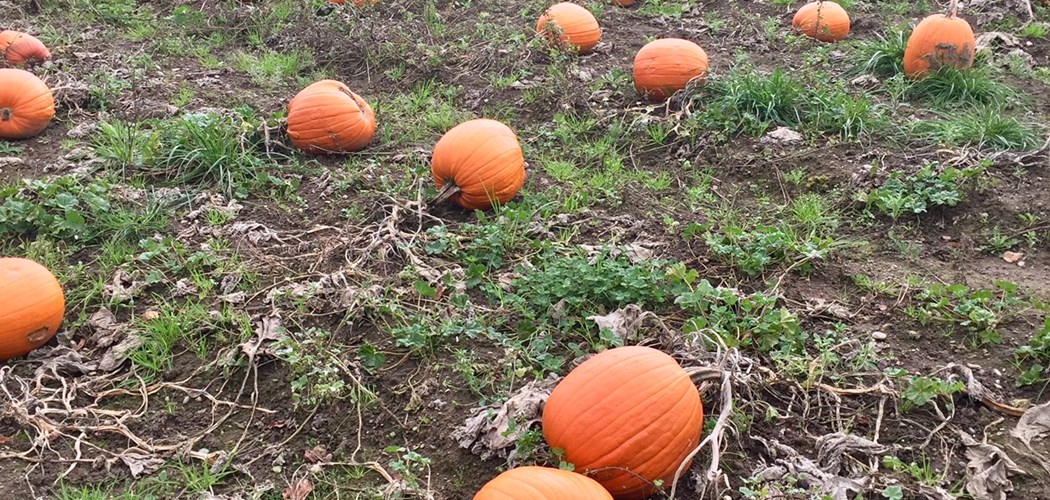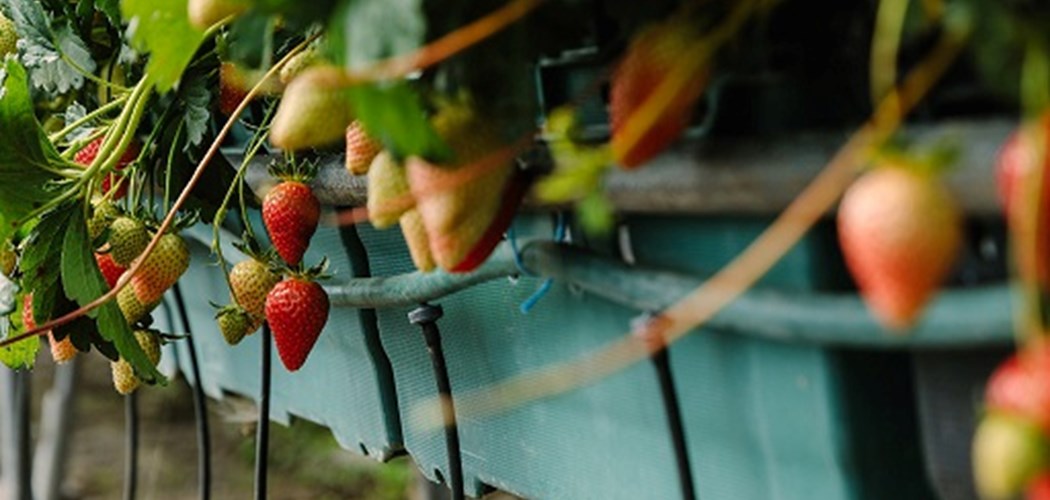Technical Advice Sheet: Pumpkin Power Hour - July

Download the Toolkit: Pumpkin Power Hour - July - English.pdf
Tyfu Cymru have launched regular Power Hour sessions for members of the Pumpkin Network. If you are a member of one of our grower networks, keep an eye out for details on our regular online meetings for network members.
These focused sessions are facilitated by Tyfu Cymru together with technical experts and include an update on topical issues based on growers instant needs, and allow you to share questions with growers and technical experts. This service will allow you to receive ongoing support through the networks. Want to join a network? Contact tyfucymru@lantra.co.uk
See the extract below and download full technical notes from the latest Power Hour can be downloaded here: Technical Advice Sheet: Pumpkin Power Hour - July.
Pumpkin Crops So Far
Welsh pumpkins have been variable so far this year - a lot of fruit are still to set the fruit at some sites are reaching football-size. Considerable variation was seen in establishment and early growth, even within rows of the same cultivar has been seen by many growers. The target drilling and planting window of the 14-20th May although many growers missed this due to dry ground. Pumpkins tend to set near the original plant, but growers have tried different methods of training pumpkin stolons to keep them out of wheelings as much as possible to minimise damage. Training pumpkins into the centre of the row can help, as well as planting rows parallel to the prevailing wind. The latter can train them quite effectively, and they need little intervention to keep them in the rows.
Pollination
Pumpkins have male and female flowers (right and left respectively), and both are needed for fruit to set. Bumblebees and flies act as pollinators and, in good conditions, a single day of activity from these insects will see a crop set. While other crops need supplementary hives, pumpkins are normally show a good set with wild bees and other pollinators. Bad weather, or very hot dry weather, can reduce bee activity and this can adversely affect fruit set. Some studies have shown that providing supplementary hives can help to ensure high levels of pollination, and can increase average fruit weight by increasing seed number. Hives can also provide local honey for sale to customers.
Disease Control
Powdery mildew is now starting to appear on pumpkin crops. This can be an issue when fruit are still small and this becomes something growers need to control. When fruit are full size, foliage infected with powdery mildew can be allowed to die down, revealing the pumpkins in situ for harvest. The reduced foliar canopy will allow the pumpkins to get some sun and develop a good colour. Perseus (EAMU 4197/19) or Signum (EAMU 2651/15) offer a good chance of controlling this disease and will persist for about 2-3 weeks. These wide-spectrum fungicides may also treat other rots which come in through the flowers, e.g. botrytis. Treated plants should recover fine and continue to grow. Alternatively, potassium bicarbonate can be a useful method of quickly knocking back severe infections which you want to prevent from spreading – Karma can be used under EAMU 2503/19. While the weather is warm, applications in the evening would be recommended, and a wetter will be required. See the Tyfu Cymru Pumpkin Disease Control Factsheet for a full list of products and rates.
Weed Control
Keeping weeds under control has been a significant challenge this year, with fat hen establishing quickly. Plants have been reaching 2m tall and it’s not feasible to pull once they reach this size as labour costs would approach £3k per acre and would cause a lot of soil disturbance. However, you can still grow decent pumpkins beneath a canopy of fat hen and this weed should die back by October, so shouldn’t be a hinderance to PYO farms. If growers want to take action towards controlling fat hen, tall plants can be tackled with loppers (perhaps when cutting the pumpkins). Pelargonic acid (e.g. Finalsan, EAMU 1609/20) and Wing-P (EAMU 0619/18) are authorised for post-emergence inter-row use. Wing-P has been effective in trials, though this product has been seen to migrate into the crop following rain, causing notable damage. Pelargonic acid appears safer, though can be costly as it has an application rate of 17 L/ha and needs a wetter. See the June Pumpkin Power Hour Notes for more details on chemical weed control options. Once pumpkins are ready, weed control can be particularly challenging as herbicide damage to the fruit must be avoided. Using a weed wiper with glyphosate could be an option, as long as this equipment is properly set up and in good working order, so there is no risk of the chemical dripping on the pumpkins. The use of in-row cultivators is increasing, though this technology can be costly. Hoeing has been a successful weed control method for Welsh growers this year, though quite time consuming.
Storage
If the forecast looks fine, a couple of weeks of good weather can really advance a pumpkin crop. However, even if pumpkins are looking good in August, wet weather at the end of summer can leave you with a ruined crop in October. Keep an eye on the forecast for September, and shift pumpkins under cover if poor conditions are expected. A suitable storage area is somewhere warm and dry — a empty glasshouse would be ideal. Do not keep pumpkins in refrigerated storage. If there isn’t the option to shelter pumpkins, growers could layer fleece in a dry area of the field and place pumpkins here after harvest to keep them from sitting in damp conditions. If pumpkins are intended for PYO sale, they can be moved back out into the field after the storage period. If yields have been low, growers may choose to buy in additional pumpkins to bulk out the field.
Disclaimer
Every effort is made to ensure the accuracy of information and recommendations given in these notes. All applications of crop protection chemicals should be made in accordance with label recommendations, which should be consulted before spraying. Some of the pesticides mentioned in these notes may not be supported by label recommendations for their use on pumpkin crops but are permissible via Extension of Authorisation for Minor Use (EAMU) in the UK under ‘The Revised Long Term Arrangements For Extension Of Use (2002)’. In these cases, the use of the pesticide is at the risk of the user and Tyfu Cymru does not accept liability for any loss or damage caused by such use. The references to on-label approvals and EAMUs for use of pesticides in pumpkin crops and are correct at the time of writing. These are subject to change and approval may be withdrawn at any point. It is the grower's responsibility to check approvals before use of pesticides. If in doubt a grower should seek advice from a BASIS qualified advisor - this is available free of charge for eligible growers through the Tyfu Cymru program, please contact us to arrange an appointment – email/telephone advice is also available.
Related Pages
Online Booking Systems for Pick Your Own
As well as making sure you can maintain social distancing a booking system will offer a number of additional benefits to make sure your customers are satisfied and that you get the best returns on your produce.
5/26/2021 4:52:42 PMWebinar: Social Media Best Practise & Email Marketing - PYO Networks
In this one hour workshop, attendees will learn the ropes of Social Media best practise and how to use Facebook and Instagram to best reach customers and drive sales. The session will also include live reviews of attendees Social Media platforms and…
3/16/2021 4:37:40 PMWebinar: Integrating Farm Tourism into your Horticulture Business
Have you considered a farm shop, a pop up café, a seasonal events calendar? How about an ‘Insta field’? The demand for photo worthy fields is on the rise, and with careful planning, establishing a pick your own will have the public flocking to your f…
2/24/2021 1:44:27 PMTechnical Advice Sheet Pumpkin Power Hour – November
The start of the 2020 season was difficult. Late frosts until the first week in May and dry soils delayed planting, but heavy rains then delayed planting further.
12/14/2020 11:31:10 AMTechnical Advice Sheet: Growing Sunflowers
Sunflowers can make a very attractive addition to wide range of businesses. They can be sold alongside a range of other products, and due to the long flowering season this can even stretch into the autumn to coincide with pumpkins in the run up to Ha…
11/16/2020 11:39:21 AMTechnical Advice Sheet Pumpkin PYO Marketing with Covid
While many of the covid-19 restrictions are being relaxed, it’s likely to continue to pose a challenge for growers for the foreseeable future – especially for those selling directly to customers for whom a high footfall on site is needed to achieve g…
9/30/2020 1:07:45 PMPick your Own (PYO): What you need to know to get 5* rated (part 2)
Part two of our Pick your Own Factsheet focusing on Marketing and Top Technical Tips...
3/19/2020 12:28:00 PMPick your Own (PYO): What you need to know to get 5* rated (part 2)
Part two of our Pick your Own Factsheet focusing on Marketing and Top Technical Tips...
3/19/2020 12:28:00 PMWeed Control in Pumpkin
Effective weed control in pumpkin is essential in growing a crop that maximizes its potential.
3/19/2020 10:53:24 AMPick your Own (PYO): What you need to know to get 5* rated…
In our series of industry insights, we provide some background to the market, as well as some top tips on ensuring that your customer experience hits that important 5-star customer rating.
12/16/2019 1:38:55 PM
